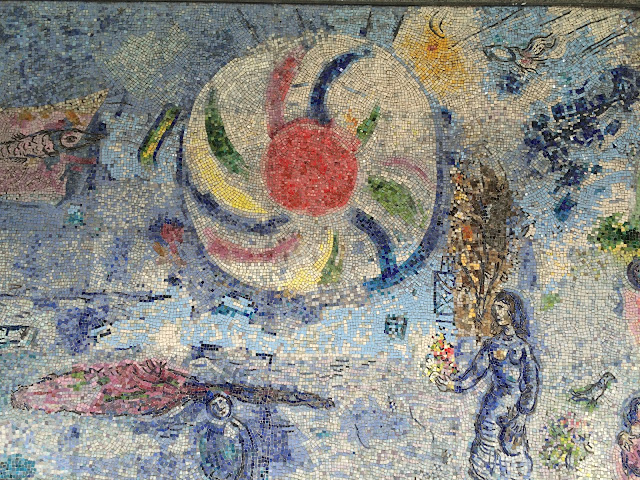Missouri isn't exactly the first place you think of when thinking wine. However, there are over 125 wineries in Missouri with the majority concentrated along the rolling hills on either side of the mighty Missouri River. These wineries are a huge tourism business for the state: over $220 million is spent annually on wine-related tourism.
During our recent family visit to the far northwest suburbs of St. Louis, we ventured out on a rainy Saturday for a scenic fall drive through the back roads along Missouri Highway 94, the Missouri Weinstrasse, historically known as the country's first designated wine trail. When German settlers first arrived to this region in the 1800s, it reminded them of everything they loved about their homeland with the sweeping vistas of the Missouri River valley and the Osage Ridge with its tree-covered slopes. Surprisingly the 15 square miles surrounding the town of Augusta, Missouri beat out areas such as the Napa Valley in California to be awarded as the country's first American Viticulture Area (AVA) due to its unique soil, climate and long tradition of local wine varietals.
Of the four larger wineries along the Weinstrasse (there are actually 8 wineries in the area surrounding the town of Augusta), we chose to visit the Montelle Winery which is described in the Official Missouri Travel Guide as "atop a ridge, 400 feet above the Missouri River bottoms". The views, despite the rainy weather, did not disappoint:
But we didn't come just for the spectacular views. There was some wine to be tasted...
The winery is in a small building located at the top of a winding, curving driveway.
Once inside customers stand at the counter and are allowed up to 5 free separate tastings of the 19 or so different varieties.
Some of the wines we tasted were:
Dry Vignoles described as a "dry white, strawberry and pineapple bouquet"...
Chardonel, described as a "dry white, apple, pear and fig bouquet"...
River Country Red, described as a "semi-dry red, black cherry aroma, soft body...as a red wine lover, this was the one husband really liked, and we bought two bottles of it.
The winery's Klondike Cafe serves a selection of salads, sandwiches and pizza.
We ordered a 12-inch Classic pizza...that was one of the best pizzas I've eaten...delicious taste with a really, crispy crust.
Unfortunately the weather was rainy the day we visited. On warmer, dry days, visitors sit on the multiple outdoor decks and enjoy the resplendent valley views while sipping their vino varieties.
During inclement weather, wine connoisseurs can enjoy their vino in the winery's two-story indoor patio. The upper-level level overlooks the lower level where live music plays on the weekends. All visitors were really enjoying themselves and dancing to the band. Since it was Halloween, many were dressed in appropriate costumes.
We thoroughly enjoyed ourselves at the winery despite the weather. The wine is delicious, the staff were friendly and knowledgeable and the food delicious. On our next visit to Missouri wine country I would like to visit the other wineries in the region.
Note to bicycle enthusiasts: Augusta, Missouri is a popular stop along the Katy Trail, a 240-mile-long bike and walking path built along the former Missouri–Kansas–Texas Railroad (known as the K-T or Katy Railroad). It runs from Machen, Missouri to Clinton, Missouri. It is currently the longest rails to trails trail in the country.
Just a few more scenes from Missouri's most scenic winery:
For more information on Montelle Winery, click here.
For more information on the Missouri Weinstraße, click here.
For more information on Missouri wine industry, click here.
For more information on the Katy Trail, click here.
Thank you for visiting,
A Great Europe Trip Planner
All photos were taken by me. Unauthorized use is prohibited.
























































